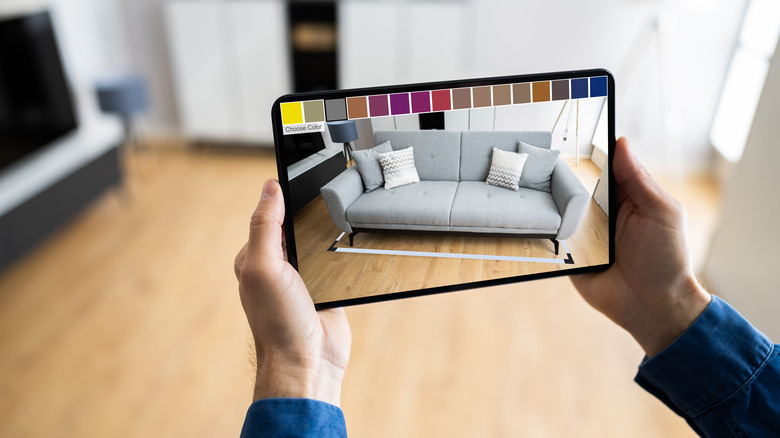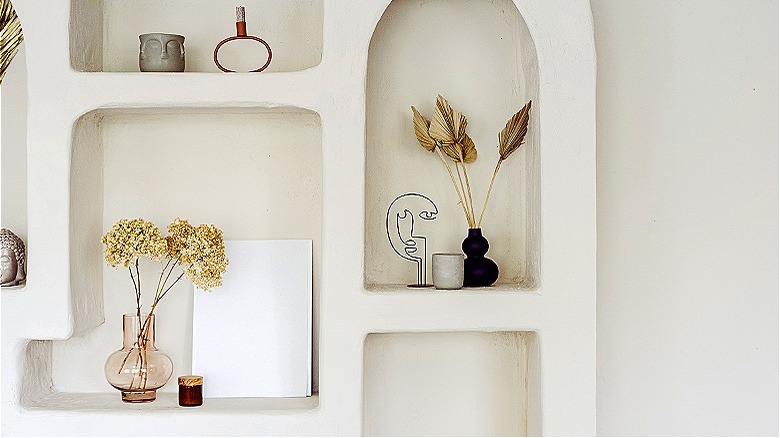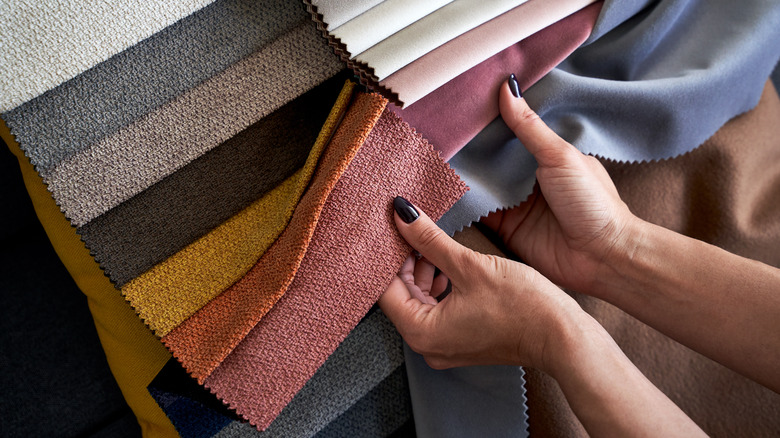An Interior Design Expert Explains The First Piece Of Furniture You Should Buy For An Empty Home
There is something both intimidating and freeing about furnishing an empty home, or even just an empty room. You can select anything and infuse any aesthetic you want, but that also means you have virtually unlimited options to choose from. If you're just not sure where to start, you might get some ideas from the tips Bonnie J. Steves, founding principal interior designer of Bonnie J. Steves Interior Design, shared in an exclusive interview with House Digest.
As Steves explains, before you ever step foot into a store to pick furniture or start taking measurements of your space, there are a few important questions you should be asking yourself: "What do you want to feel when entering your home? How will you live in the space? Is your lifestyle formal, casual, active, serene? What is the style of the house?" She also recommends you consider particular needs a space should serve, whether you're buying pieces that will only be used for a year or two or would prefer more timeless pieces you'll keep around for years to come, as well as whether you prioritize form or function more.
"By answering these questions it will help define your style, needs and wants," said Steves. This way, you have a road map to guide you when you're trying to figure out what furniture to add to a space. There are some pieces you may eliminate almost immediately, despite loving them, because they simply don't work within the parameters you've begun to set.
Start narrowing down your aesthetic
While some spaces may have architectural features that could either coordinate with or purposefully contrast the aesthetic choices you're making, in general, empty rooms are blank canvases. Faced with such freedom, you might find yourself drawn to multiple aesthetics, which when not done intentionally and purposefully can make your space feel a bit chaotic. As Bonnie J. Steves explained exclusively to House Digest, you want to start by narrowing things down in a more general aesthetic sense.
"To dive a little deeper into your psyche, think even more abstract about what inspires you? From art, colors, architecture, specific styles — from clothing, jewelry to furnishings — whether classic, traditional, contemporary, vintage, midcentury, bohemian, street, ethnic or a mixture/blend of many," noted Steves. "By taking these initial steps to understand your point of view, it will give you a better perspective of what you need!" Even if you're having trouble immediately figuring out how your inspirations translate into specific furniture pieces, you might identify certain shapes, patterns, materials, or textures you're drawn to that could guide you.
And, don't underestimate the power of visualizing how it would all work together before you actually go out and start shopping for that first piece of furniture. "As you begin to better define who you are and your specific style, create a mood board — whether an actual board or one you create online," said Steves. That way, you'll ensure the various components of your inspiration work cohesively to create a space you love.
Begin with a key piece of inspiration
You might assume that you need to start furnishing an empty home with a piece of furniture that will likely serve as the focal point, such as the couch in your living room or bed in your bedroom. While these pieces are important, Bonnie J. Steves actually recommends starting elsewhere.
"Perhaps contrary to most thinking, I don't believe that you start with a single piece of furniture. Instead, I believe a well-designed house starts with an item of inspiration that will be your jumping off point," she explained in an exclusive interview with House Digest. "It will help drive the entire design intention and direction." This inspiration piece doesn't have to be large, and it doesn't even have to be a physical object. Said Steves, "It can be a piece of art, a rug, chair, lamp, pillow, wallpaper, a piece of clothing, a favorite play or movie, or a swatch of fabric." Basically, anything that catches your eye aesthetically and contains characteristics you'd want to bring into your space.
"Once you have an idea of what you want the space to represent and better understand the aesthetic you are going for, then you can narrow down the type as well as the specific piece of furniture that will suit your short-term or long-term needs. That is when you begin purchasing," she advised. Taking these few extra steps prior to purchasing should help you choose items that are truly the right fit.


